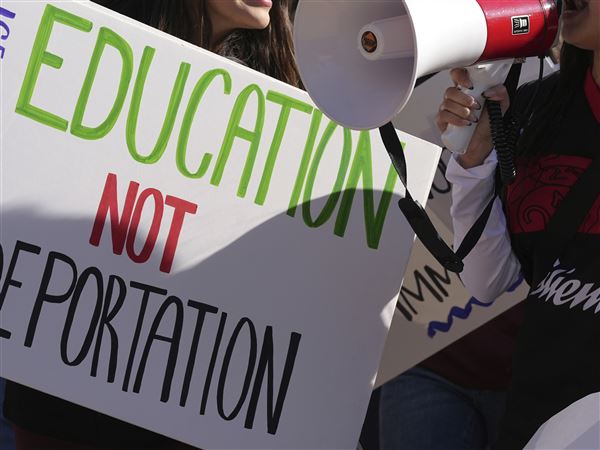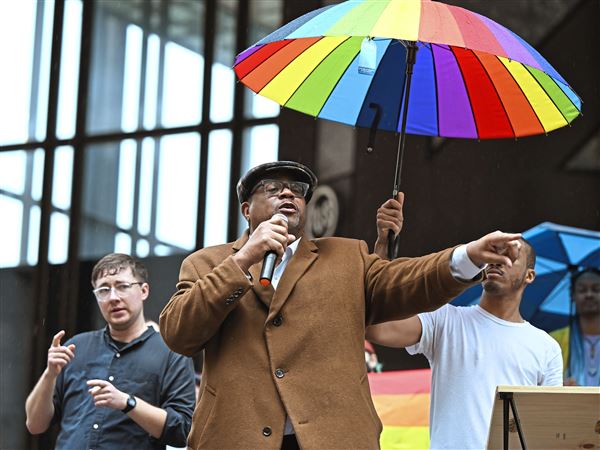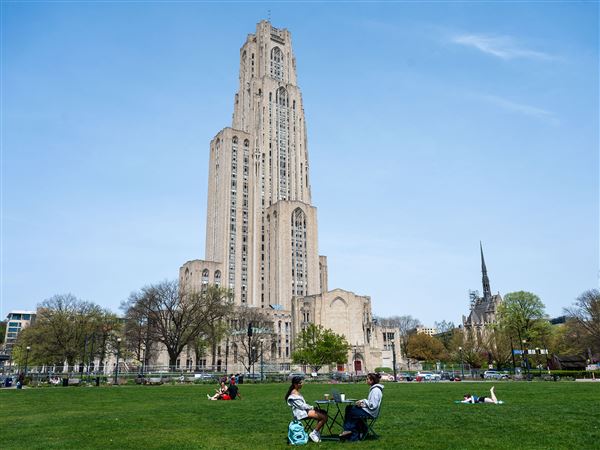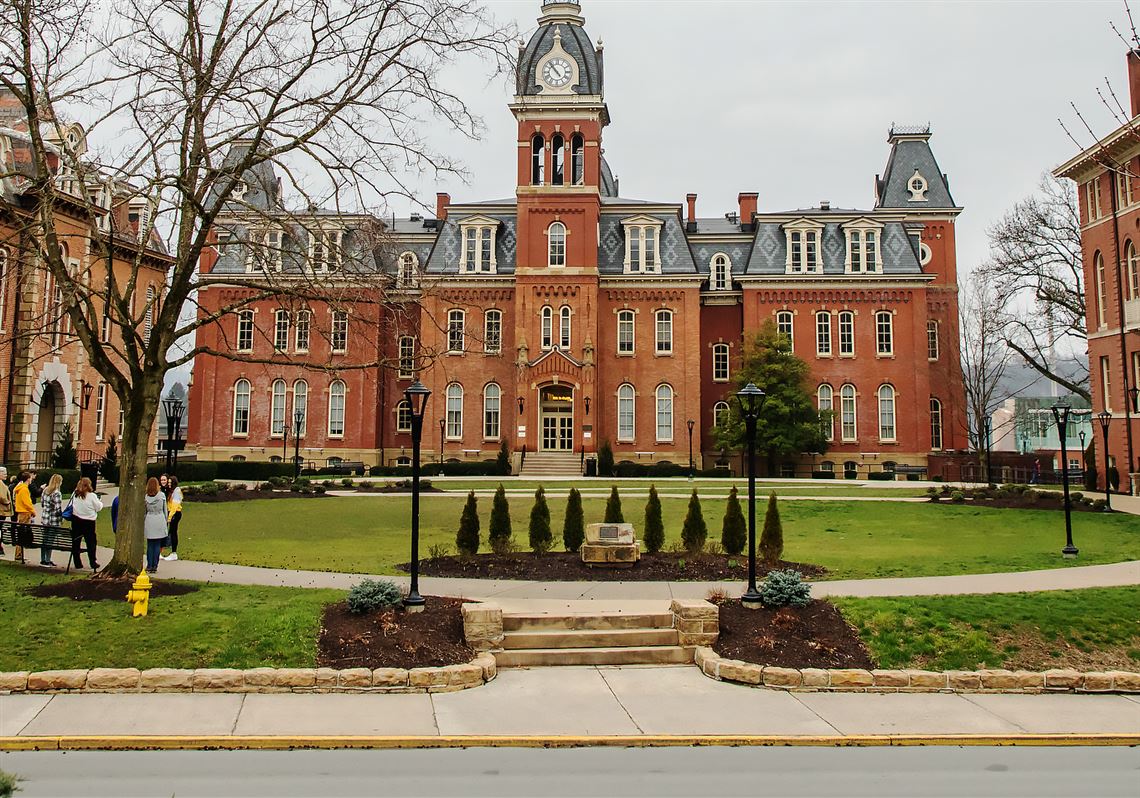At West Virginia University, 65 students infected with COVID-19 were housed inside Arnold Apartments, a campus residence, as of Sept. 15.
But by the next day, the number was down to one — at least in the eyes of the state.
It wasn’t a miraculous recovery, but, instead, a change in how West Virginia Gov. Jim Justice chooses to count cases involving college students isolating on campus under one roof. His administration says the new math better reflects reality in counties where the presence of a large university can skew infection numbers.
Others, though, argue that it’s like pretending the cases aren’t there.
Under the change, students in a designated facility with security and monitoring are considered to be in congregate housing, like a nursing home or prison, and as such are not viewed by the state as a risk for community spread. Therefore, its inhabitants count as one case.
Nationally, the arrival of students for the fall semester has brought case spikes in many otherwise rural towns and counties, sometimes causing friction with business and community leaders. In West Virginia, the numbers affect a color-coded county-by-county map determining the amount of in-person classes, athletics and extracurricular activities allowable within a county during a given week.
Monongalia County, home to WVU’s Morgantown campus, repeatedly scored a red designation, the highest-risk category on the alert map, ruling out in-person instruction and scholastic sports. The governor made no secret he’d like that to change in announcing revised treatment of college cases.
“We’ve got to come up with a way that we can better serve our people and count the people properly from the standpoint of West Virginia University, as well as throughout our state with our colleges and universities so our numbers aren’t so skewed in counties with large institutions,” Mr. Justice said.
“In a lot of ways, especially in Mon County, because they’ve been red for awhile now, a lot of people are losing some degree of hope,” he said. “That’s the worst possible thing that can happen to us.”
Asked about the matter Thursday, a spokeswoman for the American College Health Association said her organization representing 1,100 higher-education institutions was unable to point to a comparable state approach to counting student infections.
“We are not aware of any other states that are currently using this method to count cases of COVID-19 or other diseases,” said Rachel Mack, spokeswoman for the association headquartered in Silver Spring, Md.
West Virginia has logged 14,706 cases of the virus — 3,550 of them active — and 325 deaths. Its positivity rate is 4.1% daily and 2.8% cumulatively, according to the state’s COVID-19 dashboard. Monongalia has 1,868 cases and five deaths.
The state’s flagship public university, WVU has nearly 30,000 students, including 26,839 in Morgantown as of last fall.
Officials there said they support the state’s change, noting the university has worked closely with county and state health officials and see no evidence thus far that WVU cases are spreading to other parts of Monongalia or nearby counties.
“WVU does not physically bar students from leaving Arnold Apartments,’’ university spokeswoman April Kaull said Thursday. “However, we do employ 24-hour security at that facility and maintain documentation of building entrances and exits utilizing a swipe-card system.
“Any students that deviate from university and local public health directions on maintaining isolation would be violating the university's student conduct code,” she added.
Others, including the head of the statewide teachers’ union and a Pittsburgh-based infectious diseases physician, are skeptical.
Dale Lee, president of the West Virginia Education Association, said college students are far more mobile than prisoners or nursing home patients, and are known to be skilled at circumventing building security, using a single swipe card to allow multiple students to come and go.
He characterized it as a bow to bar owners and to parents, noting the modification could change the status of Monongalia County as early as next week to a place enabling face-to-face instruction and scholastic sports. That could endanger his organization’s 15,000 members’ health and that of their families if they teach in a community where the risk has been understated.
“The harm in doing it is the manipulation of the numbers and counting them just like you do the prison population or nursing home population, which are truly confined,” he said.
Referring to college students, he added, “These individuals are not confined.”
Ms. Kaull said the change does not impact how WVU reports cases on its website. For instance, the school’s website said as of Monday that Arnold Apartments had 70 students in isolation, but at the bottom of the chart was this note: “As of Sept. 16, 2020, Arnold Apartments is designated a congregate setting in state reporting of isolation numbers.”
College students who live off campus are not included in the change and will continue to be counted individually against county totals.
A spokesman for the governor was not immediately available to offer additional details. Sarah Armstrong Tucker, chancellor of both the West Virginia Higher Education Policy Commission and West Virginia Community and Technical College System, could not be reached for comment this week.
However, she is recommending that off-campus students be offered incentives to move on campus to congregate housing if they test positive.
“We're not going to go around and make students go into one of these secure dorms,” she said in a statement accompanying the governor’s announcement of the change last week. “But, if an off-campus student feels comfortable moving into one of these on-campus facilities, we would like to be able to provide that opportunity for them.”
Monongalia County Health Officer Dr. Lee Smith also was not immediately available to speak with the Pittsburgh Post-Gazette on Thursday but concurred during the governor’s announcement last week that the change should not adversely impact public health.
“I think it's of note that it's Morgantown that is seeing the positive cases, meaning that we're not seeing positive COVID cases in the western part of our county and some of the more rural areas.”
Dr. Amesh Adalja, senior scholar at Johns Hopkins University’s Center for Health Security and a Pittsburgh-based infectious diseases physician, said he was not aware of the practice being applied to college students elsewhere. He questioned how isolated the students are in reality, asking what would happen if they must go to the hospital.
“You can’t wish it away by not counting it,” he said. “It’s still a human being that still has the infection.”
Updated at 3:43 p.m. on Sept. 24, 2020
Bill Schackner: bschackner@post-gazette.com, 412-263-1977 and on Twitter: @Bschackner
First Published: September 24, 2020, 5:00 p.m.





















